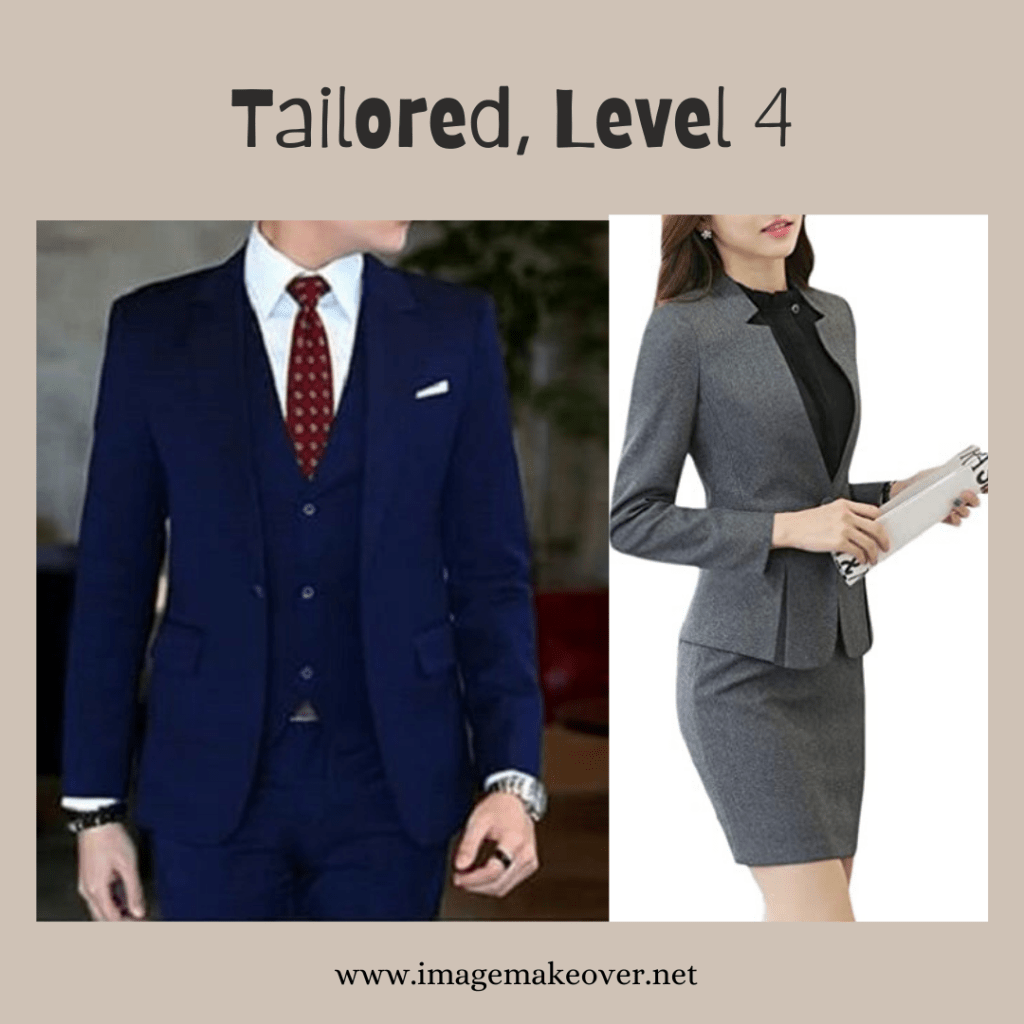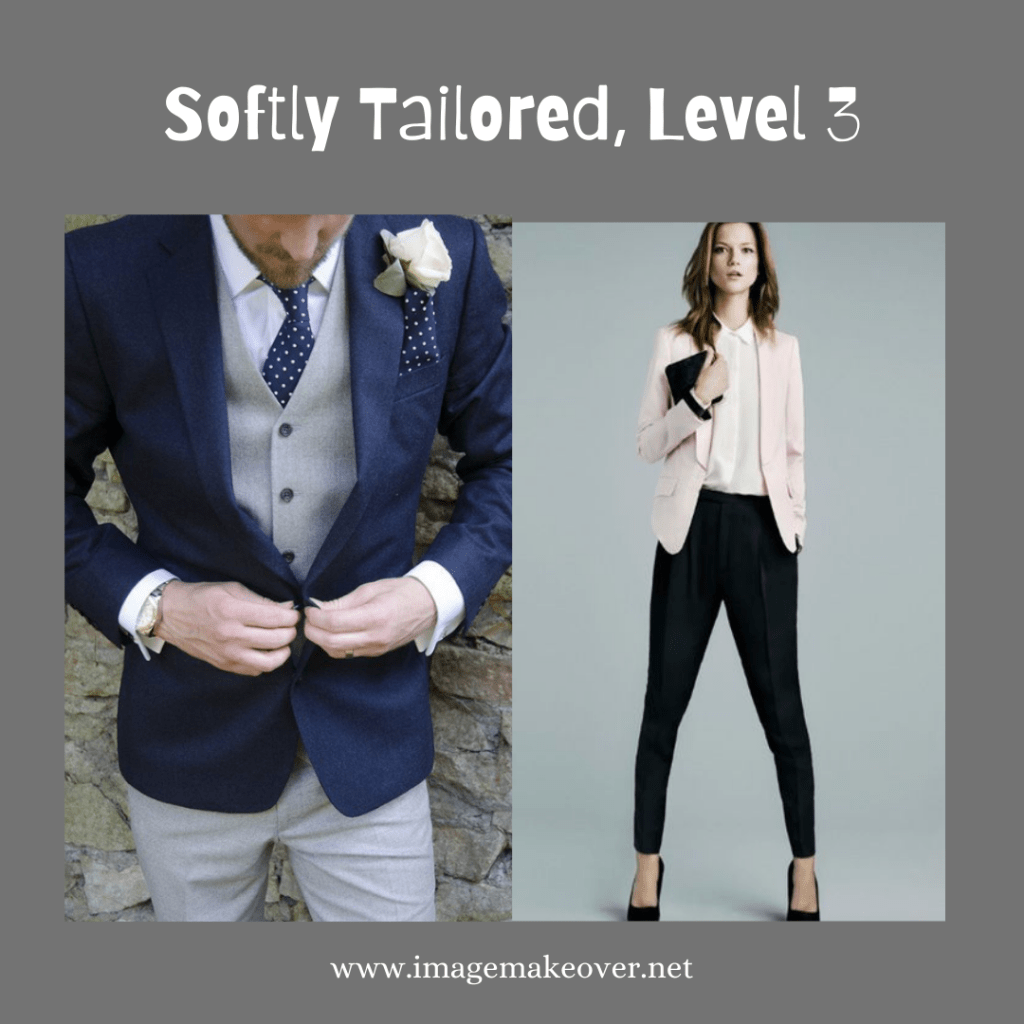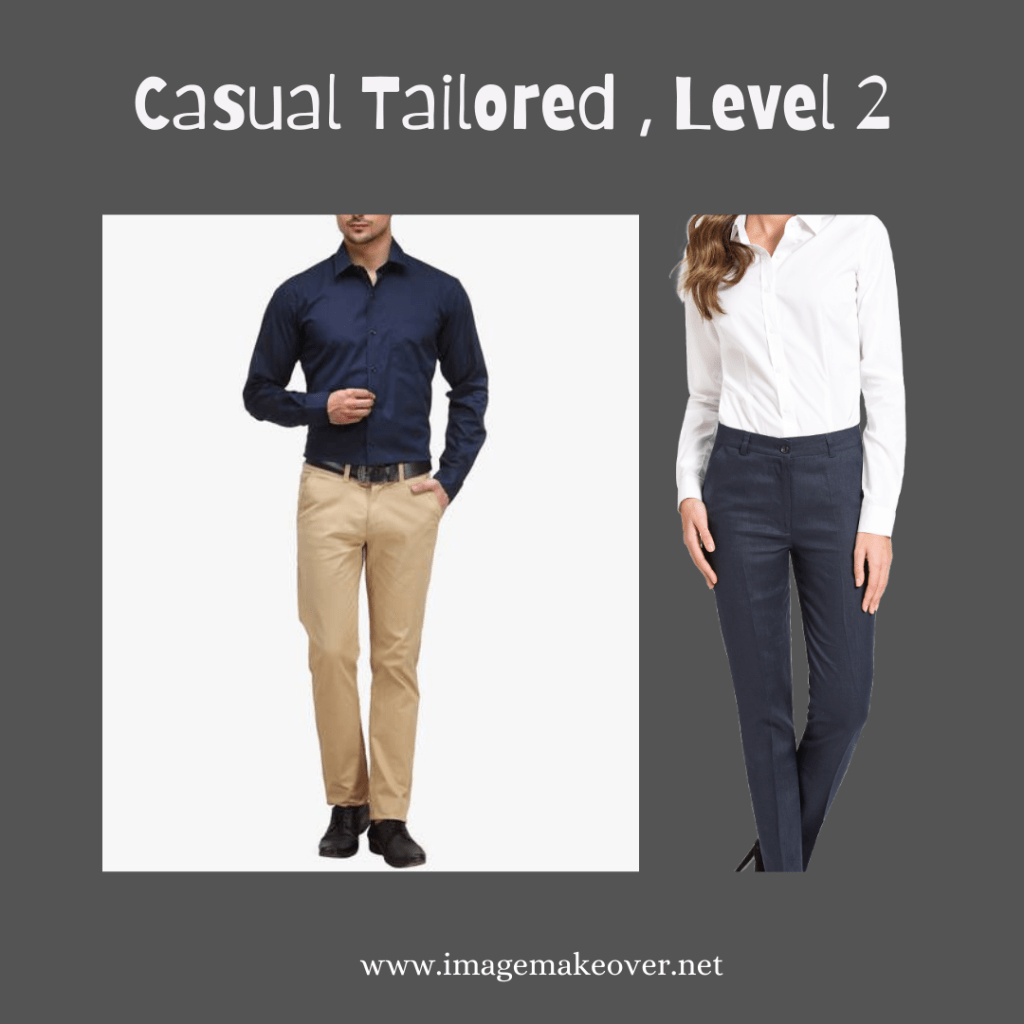
Hi Everyone,
This is my 19th post for #BlogchatterA2Z challenge. And I am really excited to share with you all, “The International Style Scale” which was introduced by Judith Rasband . It shows the art and science of dress with style and integrity. This style scale helps to know that there are differing degrees on a continuum or scale between dressing up and dressing down, between formal and casual dress in work place.
We need to become aware of the factors or variables that account for difference in dress and the statement or message that clothes communicate to you and to others. These factors are the elements of design, lines, shape, colors, texture and patterns.
It is a fact of life. We have expectations about people’s clothing and appearance for specific times and occasions based on what is socially and culturally acceptable for the time and place, or upon experience alone. For example, you would interpret a man dressed in tuxedo seen on the occasion of wedding differently than if your see the man wearing a tuxedo on the occasion of an informal backyard barbeque, and still differently if you saw him in a tuxedo and mask on the occasion of Halloween party.
Value conflicts between people, such as parents and child or employer and employee can occur because the individual disagree on their expectation of appropriate dress. The workplace is known for attention to professional appearance. Not all people want to comply, and yet by dressing to meet the expectations of those you work for and with, you can create a more positive first and lasting impression about yourself and your abilities. You can establish or maintain your credibility and exert a more significant influence.
In general, there are four types of business or work enviornments, each with typical expectations about appearance. With thought and practice, you can create an attractive, appropriate appearance for both you and the workplace, an image that will help you achieve your goals and contribute to your continuing success.
At the top of the scale is the Tailored Level of dress, or Level 4 with more formal looking clothing. They ate designed with straight lines, angular shapes, darker colors with strong dark/light contrast, firm fabric and small scale geometric patterns. They are traditionally more structured, form fitting, matched, layered and include a collar. They communicate authority, ability, stability and a more formal manner.

At bottom of the scale is Untailored Level of dress, or Level 1, more casual looking clothing. These clothes are designed with curved lines, rounded shaped, lighter color with less talk/light contrast, soft pliable fabric and larger scale rounded pattern. They are traditionally unstructured, lose fitting, unmatched, unlayered and without a collar. They communicate authority casual, relaxed, friendly, informal manner.

Within the opposite even of Tailored and Untailored are the Softly Tailored and Casual Tailored levels of dress perfectly appropriate for business casuals roles and occasion. They are mix the tailored and untailored design element mentioned before.
Softly Tailored, Level 3 clothes feature predominantly tailored design elements mixed and softened with some untailored design elements. The message they communicate are accessible, influential, capable, less formal and dependable.

Casual Tailored, Level 2 clothes feature predominantly untailored design elements mixed and strengthened with some tailored design elements. The look are more casual ,by degree. The message they communicates are approachable, functional, flexible, informal, relaxed and consistent.

At some degree within the four levels you identify your preferred style of dress, appropriate for your values, your personality, body build, coloring, budget and so on. You then adapt, modify and adjust that style according to your lifestyle, role mood and occasion, be it social or professional. People are smart to include a range of clothes in their closet that allows and encouraged a range of occasion within their own lifestyle. This makes life more interesting, more fun, more fulfilling, at all stages of life.

Message communicates first to the wearer and thank to the viewer, affecting the way the wearer think, feel and acts or behave and then the way the viewer reacts or respond. Within each level are choices of color, fabric and pattern used in combination to create subtle degree of difference in your mood and message. Each level allows for authentic, appropriate, attractive and affordable, classic and creative combination.
This post is part of#BlogchatterA2Z challenge.
To read my previous posts checkout here A ,B ,C ,D ,E, F, G, I, J.K,L,M,N,O, P, Q, R
@ Swati Mathur

Wow…so many layers to style. Such an in-depth study of each. Loved the detailing
LikeLiked by 1 person
Too formal and too casual are both not my cup of tea. Level 2 and 3 offer such amazing styles to flaunt. They look chic too and can easily be worn to informal parties after work.
LikeLiked by 1 person
So many levels os style. I like your indepth way of presenting your posts. Makes it so easy to understand
Deepika Sharma
LikeLiked by 1 person
wow.. didn’t realize this. Someday, I guess I aspire to reach Level 4 as a regular routine in life
LikeLiked by 1 person
I somehow like the untailord suits or dresses.
LikeLiked by 1 person
Well-tailored, made to scale, and properly fitting clothes speak for themselves. Although I prefer casual wear but have experienced, when I wear tailored well-scaled clothes they boost confidence like anything. Your study and research have given us some really great dressing information.
LikeLiked by 1 person
Wow I did not know that there are 4 style scales. loved the way you had explained everything, I feel it is very important to know that what makes you comfortable while selecting clothing. following trends work only when you are comfortable in it.
LikeLiked by 1 person
Wow this is really great post, well I love formals a lot and will try these levels!!
LikeLiked by 1 person
I greatly appreciate level 4, but end up exploring level 1 and 2 more. It’s strange. I really get attracted to formals but then give up on my even bigger attraction to comfort. Another detailed post with a lot of helpful information, Swati.
LikeLike
I purely believe in “jaisa desh( in context of occasion) waisa bhesh( in context of dress).” Wearing a dress opposite to the occasion really makes us a piece of laughter and idiocy. Reading all about the 4 levels is something that raised my area of knowledge today. For me, Right wearing at the right place direct inflate my confidence level.
LikeLike
Agree that we have expectations regarding dressing up on a particular occasion. I get to learn something new and exciting with your posts. Thanks!!
LikeLiked by 1 person
Level 2 and 3 are definitely my comfort zone
LikeLiked by 1 person
Wow…so many layers to style. Level 2 is my favourite .You have an in-depth study of each. Loved this post .
LikeLiked by 1 person
Clothes play a crucial role in our overall personality. Choosing occasion appropriate clothing can send the right message. I keep making a switch between Level 1, 2, & 3 according to the occasion.
LikeLiked by 1 person
I had no idea about 4 scales about dressing … Though I liked 4th one but I end up with comfortable clothes… And desi at times.
LikeLiked by 1 person
This is a very insightful post that delves into the details of style. Appreciate the nuances that you have discussed here. Style is so important to send the right message at the right time.
LikeLiked by 1 person
Oh, I never knew they are 4 levels for styling, I choose to wear clothes according to the occasion. I love casual dressing and formal only when I have to attend a meeting
LikeLiked by 1 person
Thats an amazing article.. clothes plays an important part in overall personality. I so love the detailed article. Its so perfectly penned
LikeLiked by 1 person
I loved all the clothing styles but my favorite was the Softly Tailored, Level 3 clothes – tailored design elements mixed and softened with untailored design elements. I like styles that are accessible and less formal.
LikeLiked by 1 person
Oo wow they are really awesome 👌. My favorite is level 1,2, 3 &4….. Its all depends on occasion.😊
LikeLiked by 1 person
This is such an interesting topic to delve into. During my corporate life, I had always been a Level 2, level 3 borderline, since there was no dress code.
LikeLiked by 1 person
I like to dress as per the place I am going so I am actually comfortable in both Tailored level and tailored level 4 clothing. During my corporate days, I used to wear formals clothes and now I am generally wearing the other ones.
LikeLiked by 1 person
Personally, I have loved to dress up in semi-formal to semi causal kinds of clothing as I feel they suit my personality. Never been in funky dressing ever. Loved the details you have shared on levels of clothing and how to manage them.
LikeLiked by 1 person
Nothing can replace the charm of a well-tailored suit for men. I like it when men give thought to their outfits and choose to dress up in suits!
LikeLiked by 1 person
I think dressing up well speaks a lot about who you are and your personality. I use to go for level 3 for my office wear when I use to work but my husband is all about level 4 with all his officewear customised and tailor made.
LikeLiked by 1 person